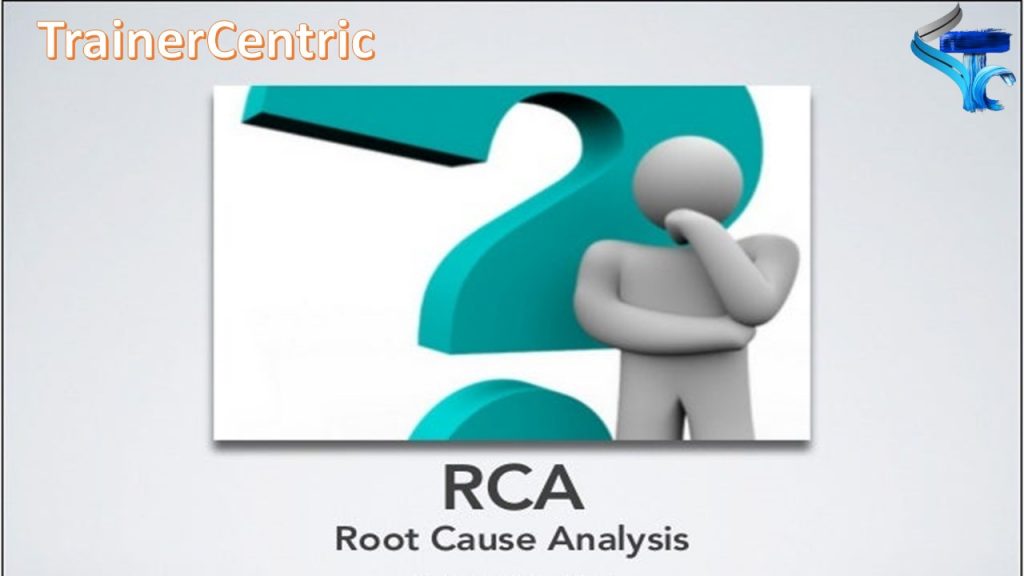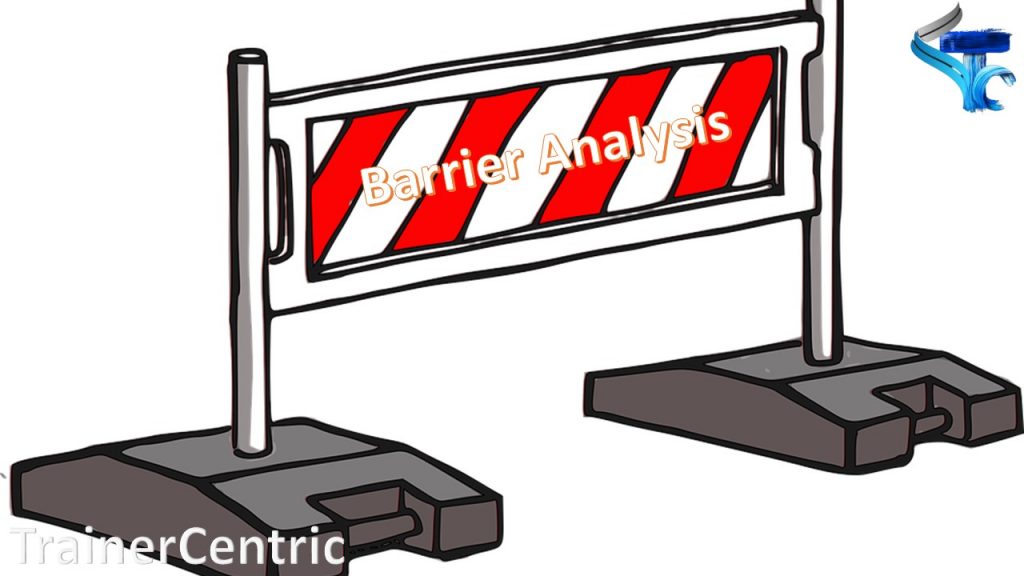Root Cause Analysis (RCA) is like being a detective in a mystery story, trying to figure out why something went wrong. It’s an important tool that helps us understand the deep-down reasons behind problems, making it easier to fix and prevent them from happening again.

Definition of Root Cause Analysis
Root Cause Analysis is a fancy term for finding out why something happened and fixing it from the root. Imagine your toy breaks, and instead of just gluing it back together, you investigate why it broke in the first place to make sure it doesn’t happen again.
Benefits of Root Cause Analysis
The main goal of RCA is to prevent problems from popping up repeatedly. It’s like building a fence to keep the trouble away. By understanding and fixing the root cause, we make things better, safer, and smoother. It’s like magic but with a bit of science!
Enhanced Problem Understanding: RCA facilitates a comprehensive understanding of problems, preventing organizations from merely addressing surface-level symptoms. It allows for a holistic examination, leading to more effective solutions.
Prevention of Recurrence: One of the primary benefits of RCA is its ability to prevent the recurrence of problems. By addressing the root cause, organizations create robust solutions, minimizing the likelihood of issues resurfacing.
Improvement of Processes: Through the identification of root causes, organizations can refine and enhance their processes. This continuous improvement contributes to increased efficiency and effectiveness.
Increased Organizational Efficiency: Efficient problem-solving, as facilitated by RCA, translates into improved overall organizational efficiency. By eliminating recurring issues, resources are better allocated, and productivity is heightened.
Goals of Root Cause Analysis
Root Cause Analysis (RCA) is a powerful tool in the realm of problem-solving, allowing organizations to delve deep into issues, identify their origins, and implement effective solutions. Let’s explore the myriad benefits and goals associated with this systematic approach.
Identifying the Root Cause: The primary goal of RCA is to pinpoint the core issue causing a problem. This involves a detailed analysis to identify the key factors contributing to the challenges at hand.
Developing Effective Solutions: Once the root cause is identified, the next goal is to develop solutions that address the core issue. These solutions are targeted and have a lasting impact on problem resolution.
Continuous Improvement: RCA aligns with the goal of fostering a culture of continuous improvement within an organization. By consistently analyzing and solving problems at their root, businesses evolve and adapt over time.
Enhancing Decision-Making: The insights gained from RCA contribute to informed decision-making. Organizations armed with a thorough understanding of root causes can make strategic decisions that positively impact their operations.
How to Conduct Root Cause Analysis
Root Cause Analysis (RCA) is a systematic process designed to identify and address the underlying causes of problems or incidents. It’s a valuable tool for organizations seeking long-term solutions and continuous improvement. In this comprehensive guide, we’ll break down the steps of conducting Root Cause Analysis in detail.
Step 1: Define the Problem
The first and crucial step in RCA is to clearly define the problem. Be specific about the issue at hand, ensuring a focused analysis. Use concise language to articulate the problem statement, setting the stage for a targeted investigation.
Imagine a company experiencing a decline in employee performance despite regular training sessions. While defining the problem, we cannot use statements like “Training is not effective” as it is vague and does not really signify anything. We should use clear and concise problem statements such as “Training is not engaging.”
Ask yourself: “What is the specific issue we’re facing in employee performance?” It could be low productivity, lack of motivation, or other concerns. Write down this problem in simple terms.
Step 2: Collect Relevant Data
Thorough data collection is the foundation of RCA. Gather relevant information related to the problem, including timelines, events, and contributing factors. Utilize various data sources, such as documents, reports, and interviews, to ensure a comprehensive understanding.
This could include talking to employees, reviewing performance metrics, or looking at feedback. Encourage honest and open conversations to get a better understanding. Once you gather enough data, you should use a data collection tool such as MS Excel and save all the relevant information together.
Step 3: Identify Contributing Factors by Analyzing Data
Once data is collected, analyze it meticulously. Look for patterns, trends, and correlations that can provide insights into the root cause. Utilize analytical tools and methods to extract meaningful information from the gathered data.
Recognize that problems often result from a combination of factors. Through careful analysis of collected data, identify and document the contributing factors that play a role in the occurrence of the problem. This step ensures a holistic perspective.
Step 4: Group Similar Issues
Sort the collected information into categories. For instance, if employees mention feeling disengaged during training, group those comments together. This helps organize the data for easier analysis.
Step 5: Determine the Root Cause
Based on the grouped issues, create a clear and concise statement that sums up the main problem. This could be something like, “Employees feel disengaged during training sessions.”
Based on the analysis, pinpoint the singular root cause of the problem. The root cause is the fundamental factor that, when addressed, will eliminate or significantly mitigate the issue. Be thorough in your examination to ensure accuracy.
You can do this by using the 5-Why analysis or use a pareto chart to prioritize the problems that are creating most of the nuisance. Draw a simple diagram, maybe a flowchart or a mind map, to visualize the relationship between different issues. This can help identify potential root causes.
Step 6: Develop Action Plan
With the root cause identified, it’s time to develop action plans. These plans should directly address the root cause and provide clear, actionable steps for resolution. Consider the feasibility and impact of each proposed action.
Use a Brainstorming session with the relevant stakeholders such as trainers, training managers, operation managers and quality analysts to find out the solutions for most of the burning root causes that contributes to our problem statement that the training sessions are not engaging.
You can use tools like Fishbone diagram or Ishikawa diagram to visually represent the effect and causes in a singular diagram.
Step 7: Implement Solutions
Execute the action plans systematically. Ensure that all relevant stakeholders are aware of the proposed solutions and their roles in implementation. Track progress and make adjustments as needed to stay on course.
This could involve in making changes to the training content or improving the facilitation skills of the trainer or even including learning activities that can help the session more engaging.
Step 8: Monitor and Evaluate
After implementation, continuously monitor the situation. Evaluate the effectiveness of the solutions by comparing the outcomes to the desired results. This ongoing assessment ensures that the root cause is adequately addressed.
Choose a few solutions to implement and monitor their effectiveness. Make adjustments as needed and keep an eye on employee performance over time.
Step 9: Document the Process
Maintain detailed documentation of the entire RCA process. This includes problem statements, data collected, analysis methods, identified root cause, action plans, and outcomes. Documentation facilitates learning and future reference.
Here are a few things you should consider documenting while conducting the Root Cause Analysis:
- Document the solutions generated during the brainstorming session. Include any innovative or standout ideas discussed.
- Outline the selected solutions and how they will be implemented.
Specify responsibilities and timelines for each solution.- Detail the process for monitoring the effectiveness of implemented solutions.
Include milestones for evaluation and potential adjustments.- Document plans for continuous improvement in the RCA process.
- Include feedback mechanisms and scheduled reviews.
- Summarize the key learnings from the RCA process.
- Provide a brief conclusion summarizing the overall findings and solutions.
- Mention any recommendations for future actions.
Step 10: Learn and Adapt
Root Cause Analysis is not a one-time activity. Embrace a culture of continuous learning and adaptation. Use insights gained from each analysis to refine processes, enhance decision-making, and prevent similar issues in the future.
Core Principles of Root Cause Analysis:

Root Cause Analysis involves understanding events and causal factors to unravel the story behind a problem. It’s akin to narrating a tale to uncover plot twists and intricacies. By dissecting each event and identifying causal factors, organizations can trace the origin of issues, allowing for more targeted and effective solutions.

Change often holds the key to solving mysteries. When a problem arises, examining what changed before its occurrence can provide crucial insights. Change analysis involves scrutinizing alterations in processes, systems, or environments. Just like in a detective story, changes act as clues, guiding investigators towards identifying the root cause of the issue.

Imagine building walls to keep trouble away—this is the essence of barrier analysis in Root Cause Analysis. Identifying barriers that could have prevented the problem helps in creating preventive measures. By understanding what obstacles could have been in place but weren’t, organizations strengthen their defense against future issues, fostering a proactive approach to problem-solving.
Approaches to Root Cause Analysis
Tools for Conducting Root Cause Analysis
The 5 Whys method: this is a straightforward approach that involves repeatedly asking why to dig deeper into the layers of a problem until the root cause is uncovered. This tool is especially effective for issues that do not require advanced statistical analysis, because it focuses on understanding the relationship between symptoms and causes in a logical and iterative manner.
Fault Tree Analysis (FTA): Breaks down complex problems into simpler parts for better understanding. Like disassembling a puzzle to understand each piece, FTA deconstructs complex issues into manageable components for clearer analysis.
Pareto Charts: Focuses on the most significant causes of a problem, akin to finding the most important ingredients in a recipe. Just as a chef prioritizes essential ingredients, Pareto Charts highlight the vital factors contributing to a problem.
Cause and Effect Diagrams: Shows how different factors are connected, similar to connecting the dots in a picture. Like drawing lines between points to reveal a complete image, Cause and Effect Diagrams illustrate the relationships between various factors influencing an issue.
Scatter Diagram: Helps find patterns in data, like connecting stars in the sky to form a constellation. Similar to recognizing patterns among stars, Scatter Diagrams reveal relationships and trends within data points, aiding in identifying potential correlations.
Brainstorming: This is a collaborative technique used to generate a wide range of creative ideas in a short amount of time. By encouraging team participation Brainstorming helps uncover diverse perspectives and potential solutions, which can then be refined and prioritized in later stages of root cause analysis.
Failure Mode and Effects Analysis: FMEA is a proactive tool used to anticipate and prioritize potential failures in a process or product. By assessing the severity, likelihood, and detectability of each failure mode teams can calculate risk priority numbers and focus their improvement efforts on the most critical areas.
These tools serve as invaluable aids in the root cause analysis process, offering diverse approaches to dissect and understand complex organizational issues. Each tool brings a unique perspective, contributing to a comprehensive and effective analysis.
Advantages and Disadvantages of Root Cause Analysis
While root cause analysis offers substantial benefits, organizations need to navigate these potential drawbacks effectively to maximize its effectiveness in problem-solving and continuous improvement.
The 3 Rs of Performing Root Cause Analysis
Recognize (Identification of the Problem): Similar to spotting a dragon in your story, this step involves recognizing and clearly defining the problem. This is the starting point for the root cause analysis process.
Rectify (Fixing the Root Cause): Imagine defeating the dragon by understanding its weakness. In the rectify phase, the focus is on addressing the root cause of the problem. This involves implementing solutions that eliminate the fundamental issues contributing to the problem.
Replicate (Ensuring the Problem Doesn’t Return): Similar to making sure the dragon doesn’t come back to the story, the replicate phase involves implementing measures to prevent the recurrence of the problem. This step aims at creating sustainable solutions and a preventive framework for future issues.
The 3 Rs framework provides a structured approach to root cause analysis, guiding organizations through the process of problem identification, resolution, and prevention.
By recognizing, rectifying, and replicating, organizations can ensure a comprehensive and effective response to challenges, fostering continuous improvement and long-term success.
Root Cause Analysis Techniques
Root cause analysis techniques are essential tools for verifying and validating the root causes of problems, which enables teams to confidently implement corrective actions. These techniques focus on systematically collecting and analyzing data to draw meaningful conclusions. These techniques include:
- Basic Data Collection
- Linear Regression and Scatter Analysis
- Design of Experiments
Basic data collection serves as the foundation of root cause analysis by providing the necessary information to investigate potential issues. This involves creating a structured data collection plan during the measure phase of the DMAIC methodology. This ensures that efforts are targeted and efficient.
Linear regression and scatter analysis help to identify relationships between variables. Linear regression predicts changes in a dependent variable based on changes in independent variables. While scatter analysis visually represents these relationships, which makes it easier to identify trends and patterns that may indicate root causes.
Design of experiments is a powerful statistical tool used to optimize process performance by determining the correct settings for key process input variables. This technique helps teams intelligently test and evaluate the factors that impact a process, which ensures that changes made to address root causes lead to sustainable improvements.
Root Cause Analysis Phases
Root cause analysis consists of three key phases
- Open
- Narrow
- Close
Each phase plays a critical role in systematically identifying, evaluating, and addressing the root causes of an issue. The open phase is focused on generating as many ideas as possible to identify potential causes of the problem. This phase typically begins with brainstorming sessions, which encourage creative thinking and allow teams to compile a wide range of ideas in a short period of time. Tools like Fishbone diagram, also known as a cause and effect diagram, are often used to organize these ideas into categories, which provides a visual structure that helps identify possible contributing factors to the issue.
The narrow phase involves refining the ideas generated during the open phase to prioritize the most likely causes. Techniques such as mult-voting are used to achieve consensus among team members on which causes to focus on. While multi-voting does not determine final solutions it helps the team narrow the options to a manageable set of high-priority items for further analysis.
The close phase focuses on validating the identified root causes and implementing corrective actions. This phase involves using hypotheses and testing them to confirm or eliminate potential causes. Once validated, these causes or Xs are addressed during the improve phase of the process. This ensures that the solutions implemented effectively eliminate the root causes of the problem.
Conclusion
Conducting Root Cause Analysis is a strategic and systematic endeavor. By following these detailed steps, organizations can navigate challenges, address issues at their core, and lay the foundation for continuous improvement. Embrace RCA as a dynamic process, and your organization will reap the rewards of enhanced problem-solving and sustained success.
Root Cause Analysis is like being a superhero detective, solving mysteries and making the world a better place. By understanding and fixing problems from the root, we ensure a happier, smoother, and trouble-free world for everyone. So, put on your detective hat, grab your magnifying glass, and let’s solve some mysteries!

![The Power of Storytelling in Corporate Training: Igniting Success and Inspiring Growth [2023]](https://trainercentric.com/wp-content/uploads/2023/06/storytelling-1024x576.jpg)

